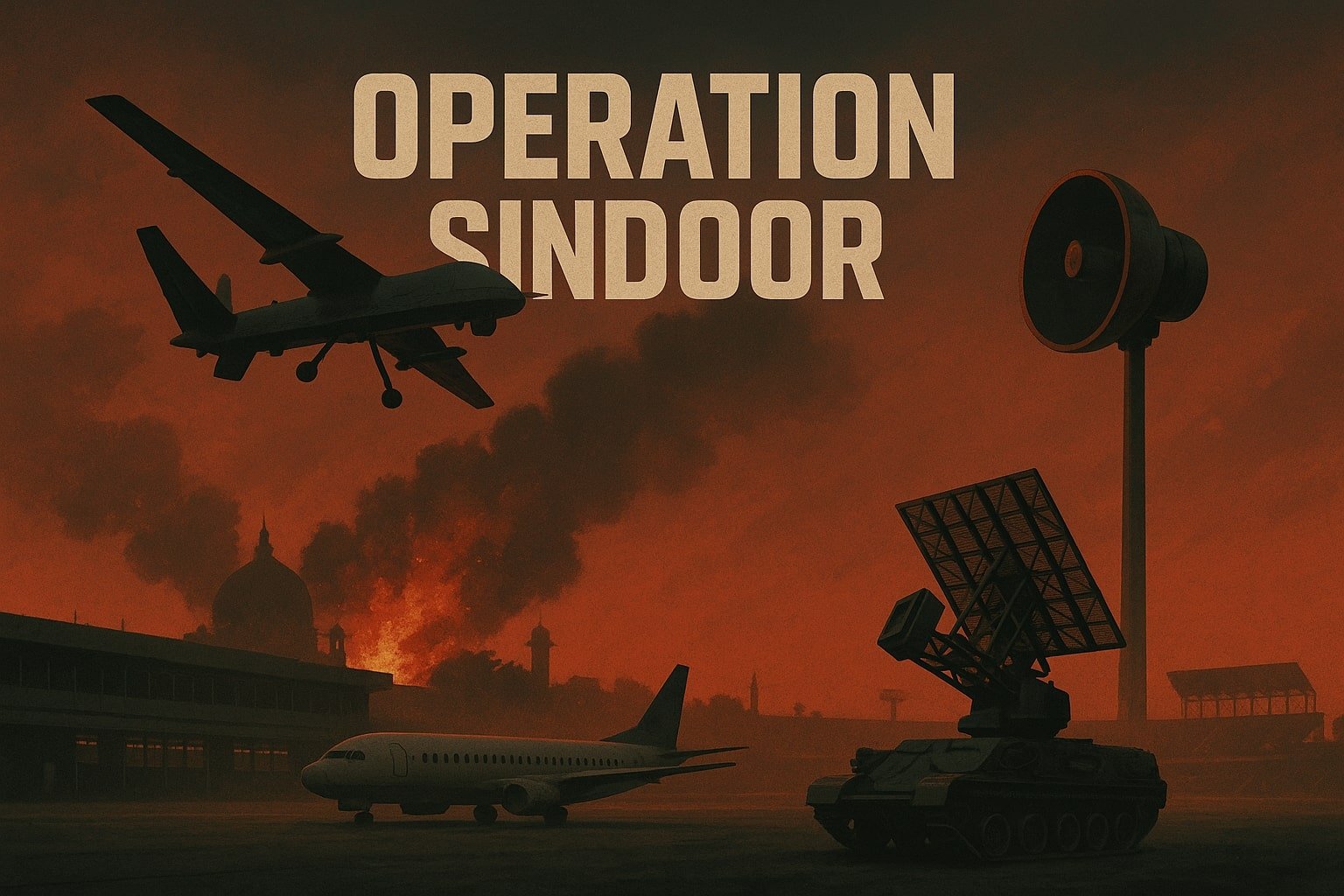On May 7, India launched Operation Sindoor, a preemptive military strategy aimed at neutralizing potential aerial threats from Pakistan. Within hours, air defense systems on both sides of the border were activated, triggering a rapid and volatile series of developments.
- Loud explosions were reported near Lahore’s Walton Airport, forcing a shutdown of air operations in Lahore and Islamabad.
- The Indian Air Force confirmed the use of drone strikes to neutralize Lahore’s air defense infrastructure.
- Pakistan retaliated with drone and missile strikes targeting Jammu, Pathankot, and Udhampur. Fortunately, India’s air defense umbrella, including S-400 Triumf and Barak 8 MRSAM, successfully intercepted the threats without casualties.
Civilian Disruptions and National Impact
The aftermath of Operation Sindoor rippled across India’s civilian sectors.
Air Travel Chaos
- 27 airports in Northern and Western India, including Srinagar, Amritsar, and Bhuj, were shut till May 10.
- Over 430 flights were cancelled, with Delhi Airport alone reporting 90 cancellations and 200+ delays.
- International carriers like Qatar Airways, KLM, and Singapore Airlines rerouted flights, increasing travel times by up to 3 hours.
IPL Suspension
- The IPL match between Punjab Kings and Delhi Capitals in Dharamsala was halted mid-game due to power blackouts.
- Later, organizers announced an indefinite suspension of the tournament.
Security Tightened
- The Bureau of Civil Aviation Security (BCAS) imposed secondary security checks and restrictions across all airports.
- Blackouts and air raid sirens affected cities from Udhampur to Jaisalmer, including major metros like Chandigarh and Mohali.
High-Risk Zones and Travel Advisories
MitKat Advisory’s situational report identified several very high-risk districts prone to further escalation:
| State | Districts | Risk Level |
|---|---|---|
| Jammu & Kashmir | Rajouri, Poonch, Kathua, Samba | Very High |
| Punjab | Amritsar, Gurdaspur, Ferozepur | Very High |
| Rajasthan | Barmer, Jaisalmer, Bikaner | Very High |
| Gujarat | Kutch (Bhuj) | Very High |
| Ladakh | Kargil | High |
Travel advisories issued globally caution tourists and business travelers to avoid border zones and monitor official updates. The U.S. State Department, UK FCDO, and other agencies have marked Jammu & Kashmir and Punjab borders as “no-travel” zones.
ALSO READ: OEMs Invited to Showcase Tech Solutions to Police and LEAs
Key Recommendations for Businesses and Travelers
Dos:
- Stay updated via PIB, State Disaster Authorities, and verified media.
- Maintain go-bags, emergency contact lists, and backup data.
- Register with embassies and adhere strictly to visa and entry protocols.
Don’ts:
- Do not travel to border regions unless absolutely necessary.
- Avoid sharing unverified social media posts that could stoke panic.
- Do not ignore cybersecurity threats, as geopolitical tension may escalate digital attacks.


